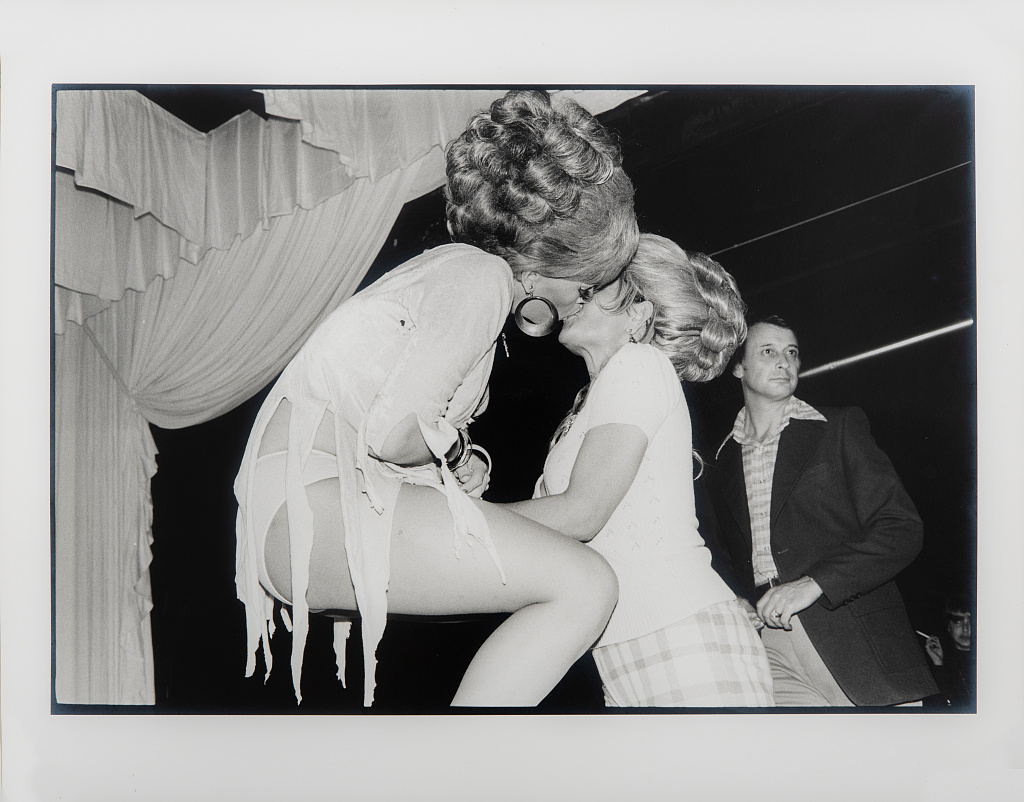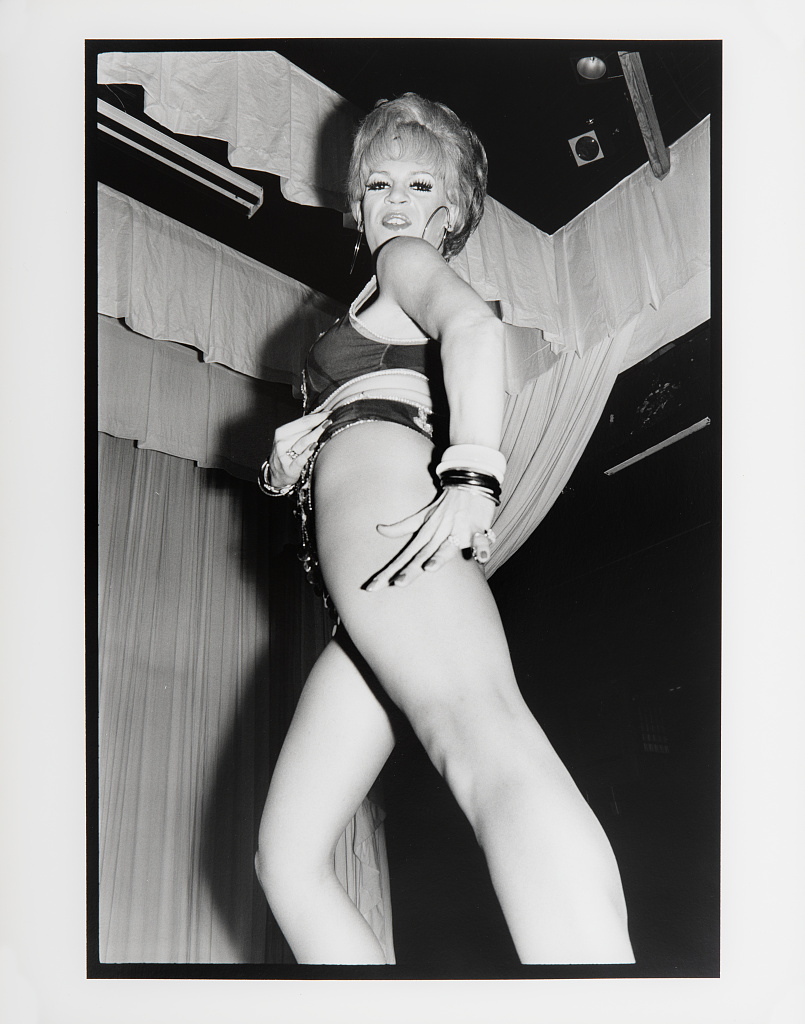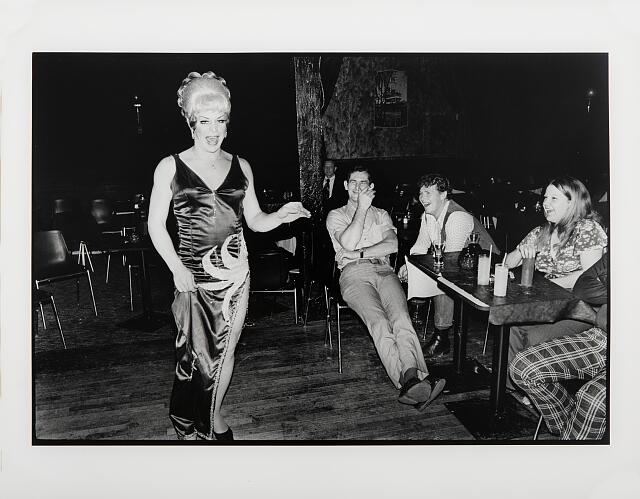The Historical Photos and Videos page features links to digitized images of queer life in the Nashville area. The section called “Snapshots” tells short stories related to some of the photographs you can find on the Gore Center’s Flickr page (linked below). We highly encourage you to sign up for a free Flickr account to add your own information and memories in the comment section of each photograph.
Library of Congress
Photographer JD Sloan recently donated a collection of images taken at the short-lived drag bar, Delta Queen, which was located at 529 Broadway in Nashville. You can view these photographs on the LOC website or the Eastman Museum website.
Albert Gore Research Center
The OutCentral Collection acquired by the Gore Center in 2019 came with over 400 photographs from Nashville queer history. These photos are mostly of 1990s Pride parades and picnics. You can view them all on the Gore Center’s Flickr page; click the pink button below.
Nashville Pride Parade, 1988
Featured Snapshots
Jan Lynch, Gay Priest and Photographer
Jan Lynch was a well-known gay photographer in the Knoxville area. Born in Virginia in 1951, Lynch’s family kept ties to Tennessee. He became ordained as a priest in the Ukrainian Catholic Eparchy of Toronto, where he served a couple of years before being granted an indefinite leave of absence after some controversial changes made by Lynch. He moved to Knoxville in 1979. It was during this time he explored his life as a gay man. He became a crucial part of the Knoxville gay community as an AIDS activist and photographer. He documented Knoxville LGBTQ+ history–everything from parties and protests to drag shows and Appalachian Bear Club meetings. Lynch died of AIDS in 1996.
According to the Knox Mercury, “Jan’s photographic archives fell into a kind of limbo from which they have still not surfaced, uncataloged and largely unseen since then.” The Albert Gore Research Center has a few of his photographs, which they believe to be reprints and not originals, in their OutCentral Collection. In this slideshow below, there are four of these photographs: the first two are from a Knoxville Pride rally circa 1994, and the second set of images are from the 1993 March on Washington for Lesbian, Gay, and Bi Equal Rights and Liberation.
Source: Ed White, “The Provocateur: 20 years Ago, Priest-Turned-Photographer Jan Lynch Documented Life in Knoxville’s Gay Communities,” Knox Mercury, October 6, 2016.
Bianca Paige the Pantomime Rage
Bianca Paige spent nearly two decades as Nashville’s preeminent drag queen. Mark Middleton from Paducah, Kentucky transformed himself into Bianca Paige and stole the hearts of every audience. She was known for her impressions of singers and actresses like Celine Dion, Melissa Etheridge, and Shirley MacLaine, among others. In the mid-1990s, Middleton learned he was HIV-positive. Instead of hiding the diagnosis, he talked about it on stage and, over the years, raised $1 million for HIV/AIDS treatment and research. Middleton succumbed to lymphoma in 2010. Bianca Paige had such a lasting impact on Nashville that the city honored her with her own street, which was dedicated in June, 2021.
The Albert Gore Research Center‘s OutCentral Collection photographs include a few images of Bianca Paige in Nashville Pride parades in the 1990s. Some of them feature Paige riding a memorable large pink elephant, and others feature her as queen of a jungle-themed float.
Sources: Jim Ridley, “Nashville says farewell to Bianca Paige, the Pantomime Rage, at a memorial service the city will never forget,” Nashville Scene, Sept. 2, 2010; Erica Ciccarone, “A Local Street Now Honors Drag Queen Bianca Paige,” Nashville Scene, June 23, 2021.
Nashville Pride Parades
The first Nashville Pride parade occurred on June 25, 1988. It was the March on Washington of 1987 that ignited activism in Tennessee and the need for Pride festivities. The Tennessee Gay & Lesbian Alliance (T-GALA) was one of the major sponsoring organizations for the Pride Committee that planned a week of events. According to Dare founder Jef Ellis, the Pride Committee would meet at the Towne House Tea Room for planning.
The parade started at Fannie Mae Dees Park and ended at Centennial Park, where a couple hundred people gathered for a variety of entertainment. The two-hour stage show included Gerrit Wilson singing the official anthem composed for Nashville Pride, called “Come Out to Play,” and performances by folk singer Judy Eron and singer-songwriter Greg Fisher. Jeffrey Levi, executive director of the National Gay and Lesbian Task Force, was the keynote speaker, who urged the audience to continue grassroots organizing and targeting the policies of local and state governments.
Every year since 1988, Nashville’s Pride activities have gotten bigger and better. Today, Pride weekend is attended my tens of thousands of people. In 2019, the festival drew a reported 75,000 attendees. Play the slideshow below to see photographs of Nashville Pride parades circa 1990s from the Albert Gore Research Center‘s OutCentral Collection.
Sources: Dare, June 22, 1988; Joey Gill, “Nashville Pride Festival breaks attendance record with over 75,000 attending,” WSMV, June 27, 2019.




